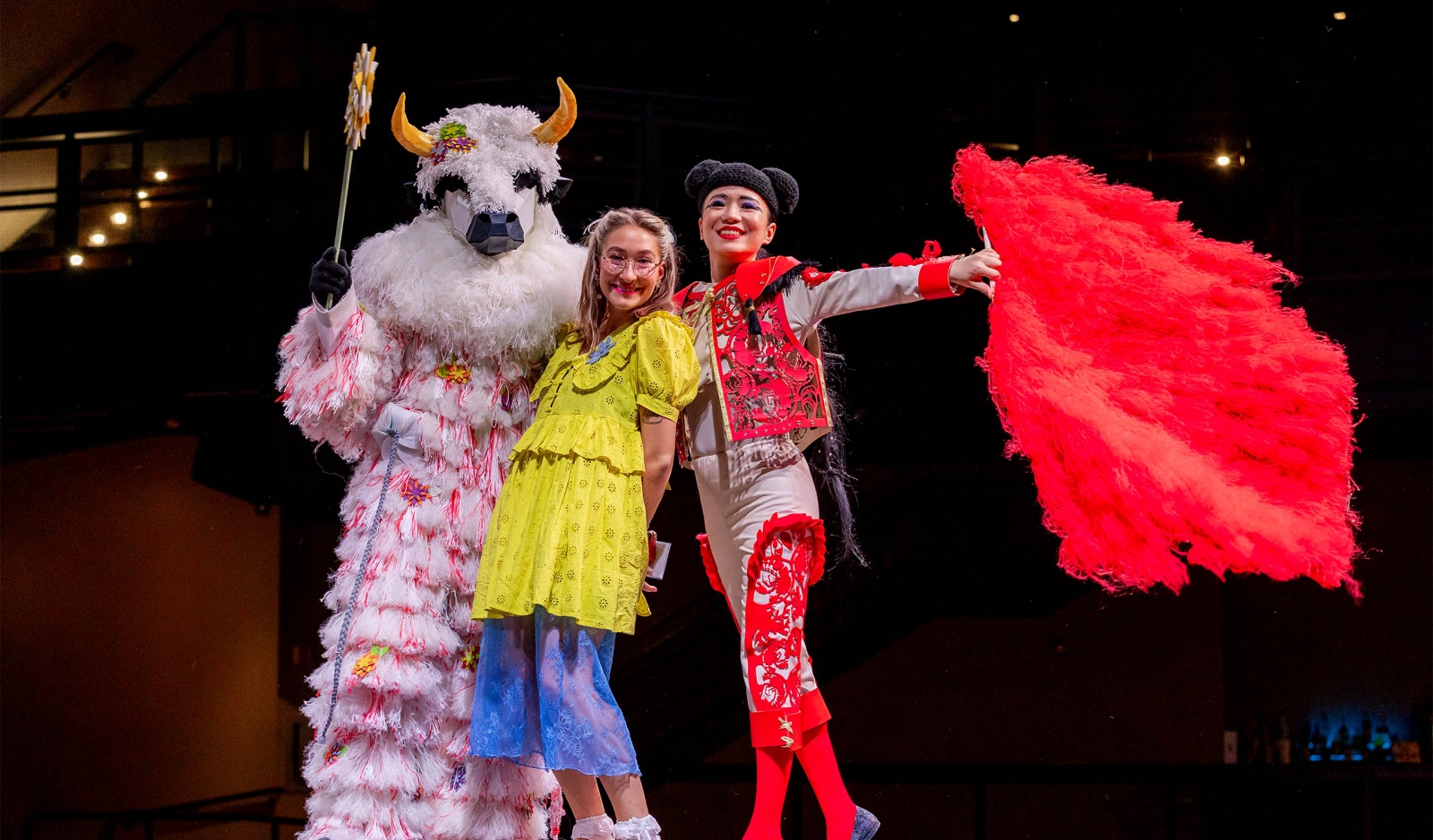PAYETTE’s fashion show team selected The Story of Ferdinand, a fictional work by author Munro Leaf, as the inspiration for this year’s IIDANE Fashion Show entry. In the story, Ferdinand the Bull is a bull who would much rather spend time smelling the flowers than participate in bullfights. Led by the Interior Design group and partnered with Bentley Carpets, Forbo, and Ritz Associates, we brought our vision to the runway.
The Matador costume was constructed from leather and felt by Ritz Associates, linoleum flooring by Forbo and carpet yarns by Bentley. In the Story of Ferdinand, the Matador is depicted as a beautiful figure who tries to entice Ferdinand to fight.
During early brainstorming sessions about the matador costume, we wanted to create something that was an iconic representation of Boston and New England. Most of the team immediately thought about…. “Lobstah” and seafood. Traditionally, Matador costumes are eccentric, detailed and elegant. Using organic lines, the team explored several ways to create elegant seafood patterns.

The team embarked on a long journey to reach the final pattern. After designing the first version of the pattern, we test-cut the black leather, and laid the cut piece on top of the red leather. The team was concerned whether the thin lines of black leather could endure the model’s movements when on the runway. Then, we investigated using same method by cutting the pattern but instead painting the void, creating a stamped effect. But, the team felt this solution did not reflect the elegance they were seeking. Finally, we explored a method of connecting each lobster body part, creating a lace effect. When we conducted a test cut of the shape, we knew this was the result we were looking for – it was eccentric, detailed, elegant and reflected our region.

To have stronger constructability for the vest, the team mounted leather on top of chipboard to gain some firmness. The laser cutter’s bed is 18”x32”, so we separated the vest piece into four pieces, then connecting them after they were cut. Keeping those dimensions in mind, the team carefully calculated and designed the pattern in a way that would not create odd shapes or patterns. As for the leg pieces, we used felt because we needed something that was more comfortable and movable than leather. Trusting our several tests cut experiments, we created the vest and leg pieces that would be applied to the matador’s costume.

One of the obstacles we encountered was making shoulder pads and cuff pieces. Unlike leather and felt, linoleum was extremely hard to cut in the laser cutter. Therefore, the team hand cut and hand drilled the holes to make these pieces. This process required more time in planning how to cut and where to drill the holes, and a lot of patience when we were hand cutting.

After the pieces were cut, we added some sparkles, tassels and additional patterned cut pieces that could be applied to the costume sleeves. To provide an accent to the leg cut-outs, the team used felt to create a three dimensional edge mimicking lobster tails.
While not necessarily recognizable from afar, people were able to instantly recognize the seafood pattern upon closer inspection, providing depth and nuance to the costume.

Finally, carpet yarn was used to create the accessories including the hat, spear and cape. The team crocheted the matador’s hat and the cape was made up of hundreds of red tassels handmade by the team. The spear was wrapped with red yarn, tying it in beautifully with the rest of the costume.

Overall, we had a significant amount of fun with our interpretation of The Story of Ferdinand, and it was truly reflected in our entry!
Related Posts







